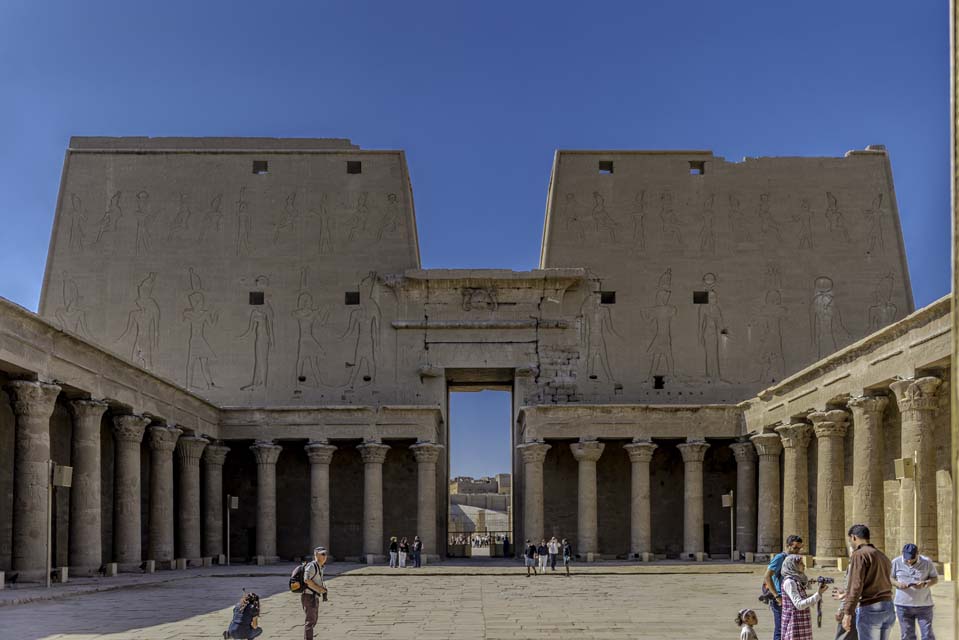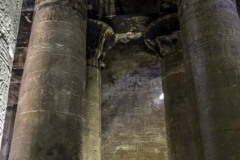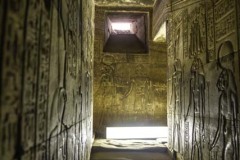The Temple of Edfo, also known as the Temple of Horus at Edfu, is an ancient Egyptian temple located in the city of Edfu, about 60 km south of Luxor. It was built during the Ptolemaic period, between 237 and 57 BC, on the site of a much older temple that had been dedicated to Horus, the falcon-headed god of the sky and protector of the pharaohs.
The temple was constructed over a period of 180 years and is one of the best-preserved temples in Egypt, due in large part to the fact that it was buried under sand for centuries. The temple is dedicated to Horus and his wife, Hathor, the goddess of love and fertility, and is considered one of the most important religious sites in ancient Egypt.
The Temple of Edfo is renowned for its impressive architecture, including its enormous entrance pylon, its hypostyle hall, and its sanctuary, which houses a statue of Horus. The temple also features a series of fascinating reliefs and inscriptions that provide valuable insights into ancient Egyptian mythology, religion, and history.
In addition to its religious significance, the Temple of Edfo has played an important role in modern-day Egyptology. It was one of the first ancient Egyptian sites to be systematically excavated and studied by European scholars in the 19th century, and it continues to be a popular destination for tourists and researchers alike.
It is part from their geographical location, all belong to the Ptolemaic period with Esna, Edfu and Kom Ombo
Dedicated to the god Horus of Behedet, lord of Edfu, the Temple of Horus is the most famous monument at Tell Edfu. Due to its completeness and state of preservation, it is the best example of Ptolemaic temple building in Egypt. The temple is oriented from south to north, measuring little over 140mlong and occupying an area of about 7000
How and when you can visit Edfo Temple
The Temple of Edfu is open to visitors daily from 9:00 am to 4:30 pm, with last admission at 4:00 pm. It is possible to visit the temple as part of a guided tour or independently.
To visit independently, you can hire a taxi from Luxor or Aswan or take a public bus to Edfu. From the bus station, you can hire a horse-drawn carriage, locally known as a “calèche,” to take you to the temple.
It is also possible to visit the temple as part of a guided tour, which may include transportation, admission fees, and a knowledgeable guide who can provide insights into the history and significance of the temple. Many tour operators offer guided tours that combine a visit to Edfu with other nearby attractions, such as the Temple of Kom Ombo or the Temple of Philae.
It is recommended to visit the temple early in the morning to avoid crowds and the midday heat, and to wear comfortable shoes and clothing as the site involves a fair amount of walking and climbing. Additionally, visitors should be respectful of the temple’s religious significance and cultural heritage by refraining from touching or damaging any of the ancient structures or artifacts.
The importans of Edfo Temple
The Temple of Edfu, also known as the Temple of Horus at Edfu, is considered one of the most important and well-preserved temples in Egypt. Its significance lies in several aspects:
- Historical Importance: The Temple of Edfu was built during the Ptolemaic period, between 237 and 57 BC, and is dedicated to the god Horus. It is a prime example of ancient Egyptian religious architecture and provides valuable insights into ancient Egyptian mythology, religion, and history. The temple’s reliefs and inscriptions also provide details about the Ptolemaic dynasty, which ruled Egypt at the time of its construction.
- Architectural Importance: The temple’s impressive architecture is one of its key features. Its entrance pylon, hypostyle hall, and sanctuary are all examples of the finest Egyptian architectural design. The temple’s construction over a period of 180 years also shows the evolution of ancient Egyptian building techniques.
- Preservation: The Temple of Edfu is one of the best-preserved ancient Egyptian temples, due in part to its location, which was buried under sand for centuries. The temple’s conservation and restoration efforts have helped to preserve it for future generations.
- Tourist Attraction: The Temple of Edfu is a popular tourist attraction, drawing visitors from all over the world who come to see its stunning architecture and learn about ancient Egyptian history and religion. Its importance in the study of Egyptology also makes it a destination for researchers and scholars.
Overall, the Temple of Edfu is a crucial monument in the study of ancient Egyptian history, religion, and architecture, and its preservation is a testament to its cultural significance.







